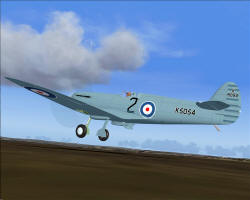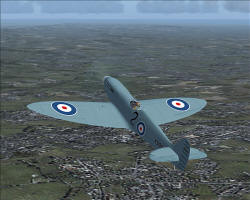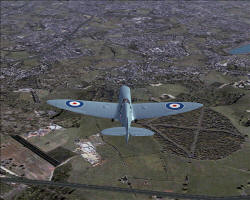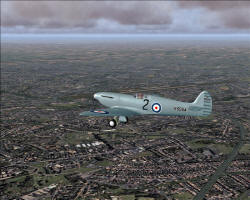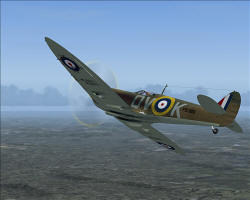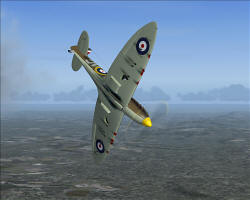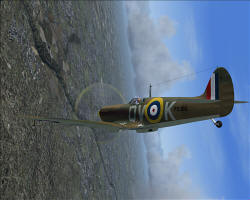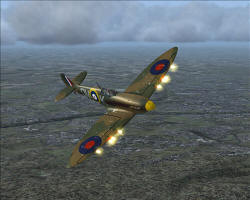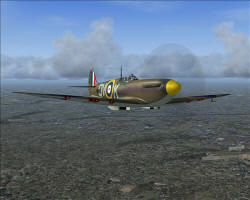
From one 'Mut' to another.
A short tribute to the
maiden flight of the Spitfire.
By Mutley
At
4.35pm on the 5th March 1936, Vickers Supermarine chief test pilot Capt. J. 'Mutt Summers' raised the specification F.37/34 prototype 300 Spitfire
(Serial K5054) into the air at Eastleigh. (Now Southampton International Airport EGHI,)
The first flight lasted just 8 minutes, it took off 35 degrees across
wind, this was because experience with the
racing seaplanes had revealed a strong tendency to swing to port due to
the high torque.

Summers found that although there was indeed a
tendency
to swing, it was easily checked by the application of the opposite
rudder. The aircraft seemed to drift into the air and the maiden flight,
which was made with the undercarriage locked down, was effortless. Upon
landing 'Mutt' is famously quoted as saying "I don't want anything
touched".
In fact the only thing that was touched was the propeller. For the
maiden flight K5054 had been fitted with a fine pitch propeller to give
the pilot more rpm therefore more power on take off. This prop was
replaced by a normal-pitch one for the second and subsequent flights.
Over the next three days a further three flights took place, all piloted
by "Mutt" lasting 23 minutes, 31 minutes and 50 minutes during which
time he flight tested the aircraft with a variety of stalls and steep
turns to fully explore the flight characteristics of this unique
aircraft.
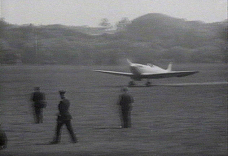
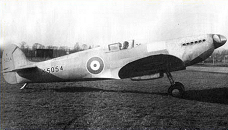
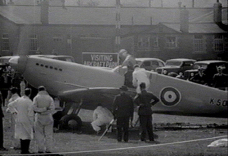
The next few months saw further trials carried out with no major
problems and K5054 was delivered to the Aeroplane and Armament
Experimental Establishment at Martlesham Heath for official trials on 26
May 1936. The Air Ministry were so impressed with this new fighter
aircraft that prior to the full test programme being completed they
issued a contract for 310 Spitfires on 3 June 1936 to the value of
£1.25million.

The prototype Spitfire achieved a maximum speed of 349mph (increased to
364mph in the first production Mk I's), had excellent maneuverability,
rate of climb and turning circle. Pilots were to describe the ease of
its control in the air as almost flying itself.
On 15th May 1938 Jeffrey Quill, the then chief test pilot, flew the
first production Spitfire, K9787, from Eastleigh and then, on 4th August
1938, he delivered the first RAF Spitfire, K9789, to No.19 Fighter
Squadron at Duxford.
By 1945 the aircraft had significantly increased its fire power, nearly
doubled its rate of climb and achieved a speed of 450mph, almost exactly
100mph faster than the K5054 prototype. These achievements are testament
to RJ Mitchell, and his team's,
brilliant original design.
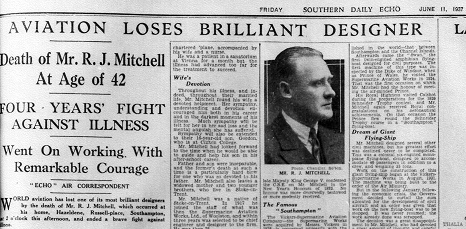
From 1938 until manufacture ceased in 1947, over 22000 Spitfires were
built. Unfortunately, due to his untimely death on 11th June 1937, R. J.
Mitchell never saw his greatest design legacy into production.
The
Spitfire was developed into 24 different marks and, in addition to being
an RAF fighter, fulfilled roles as a folding-wing aircraft carrier plane
and photographic reconnaissance aircraft.
As a footnote, on 4th September 1939, the day after war broke out, the
original prototype crash landed due to a misjudgment on the part of the
pilot, Flt Lt 'Spinner' White. Sadly he was killed and K5054 never flew
again.
Thanks to the Spitfire
Society, Southern Life, Wikipedia and Spitfireonline for invaluable
information.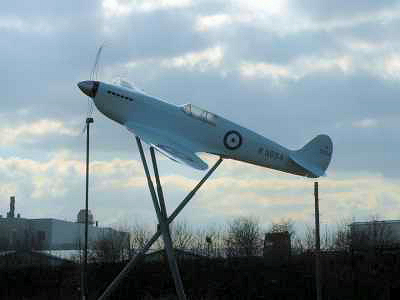
Southampton Airport proudly celebrated the 70th anniversary of the first flight of the
Spitfire. A re-enactment of the Spitfire’s very first flight
took place at the airport at 16:30 on Sunday 5 March, exactly 70 years
after the original flight took place.
In the co-pilot's seat was Alex Henshaw, 93, one
of the original test pilots. Once
the Spitfire re-enacted the test flight around the airfield at
Southampton, it was be joined by four other Spitfires in
formation and performed a fly-past over the city
The formation of five spitfires performing the fly-past
was best viewed from Mayflower Park
in Southampton and the Itchen
Valley Country Park, Eastleigh.
Below,
are shots taken from
Just Flight's
excellent Spitfire flight sim addon.
Included in the package is the prototype along with many other variants
from the early Mk1's to the Mk22 with period scenery of RAF Duxford.
Click on screenshots to see larger image
